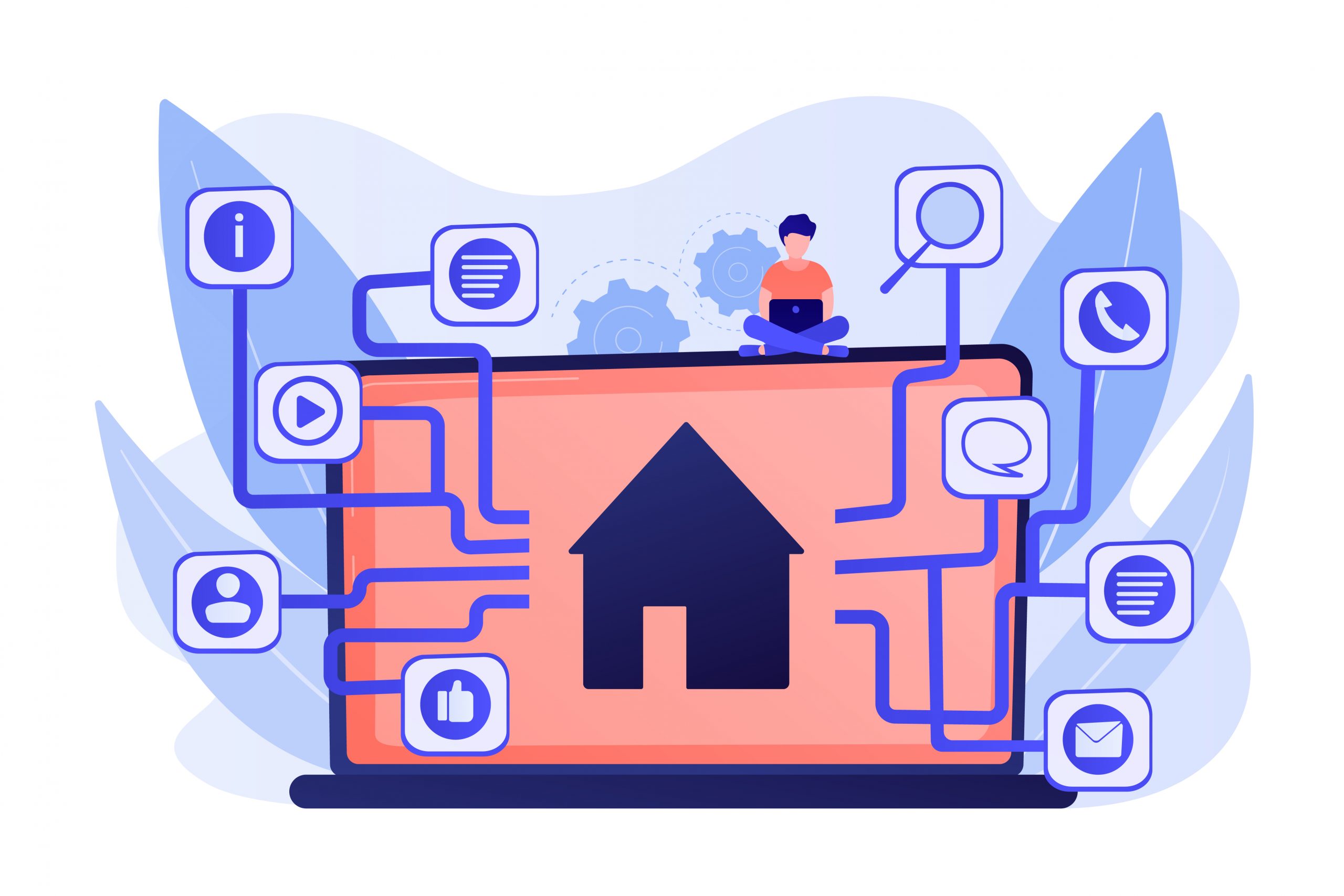Sure! Here's an engaging, informative excerpt within the specified character range: --- **How Artificial Intelligence is Transforming Everyday Business Processes** You’ve probably heard the buzz about AI, but what does it really mean for everyday business activities? Well, in simple terms, AI is changing the game by making routine tasks smarter, faster, and more efficient—whether it’s managing customer service, streamlining supply chains, or optimizing marketing efforts. Take customer support, for example. Chatbots and virtual assistants powered by AI are now handling common inquiries around the clock. Instead of waiting on hold, customers get instant responses—saving time for everyone involved. These AI tools learn from interactions, so over time, they get better at solving issues and even guiding users through complex problems. In sales and marketing, AI analyzes vast amounts of data to identify customer trends and preferences. This insight allows businesses to personalize offers and improve targeting strategies. What used to take days of manual sleuthing now happens in real-time, helping companies engage with their audiences more effectively. Supply chain management, too, has been revolutionized by AI. Predictive analytics forecast demand fluctuations, enabling businesses to optimize inventory levels and reduce waste. Robots and automated systems in warehouses can pick, pack, and ship products more quickly than humans—cutting down on errors and speeding up delivery times. Financial processes are getting smarter as well. AI-driven algorithms detect fraudulent transactions, automate routine accounting tasks, and support decision-making with predictive insights. This not only enhances security but also frees up staff to focus on more strategic initiatives. Of course, these changes aren’t just about replacing humans; they’re about empowering workers to do more with less drudgery. By automating repetitive tasks, AI allows employees to focus on creative, strategic, and customer-centric activities—adding real value to the business. All in all, AI is no longer a futuristic concept; it’s an integral part of modern business operations. Companies that embrace these tools can unlock new efficiencies, improve customer experiences, and stay competitive in a rapidly evolving marketplace. So, whether you’re in retail, healthcare, finance, or manufacturing, AI is transforming everyday business processes in ways that are hard to ignore—and the best part? The journey has just begun. --- Would you like me to continue or expand on any specific aspect?
Trending Articles
Articles2 months ago
How Artificial Intelligence is Transforming Everyday Business Processes
Sure! Here's an engaging, informative excerpt within the specified character range: --- **How Artificial Intelligence is Transforming Everyday Business Processes** You’ve probably heard the buzz about AI, but what does it really mean for everyday business activities? Well, in simple terms, AI is changing the game by making routine tasks smarter, faster, and more efficient—whether it’s managing customer service, streamlining supply chains, or optimizing marketing efforts. Take customer support, for example. Chatbots and virtual assistants powered by AI are now handling common inquiries around the clock. Instead of waiting on hold, customers get instant responses—saving time for everyone involved. These AI tools learn from interactions, so over time, they get better at solving issues and even guiding users through complex problems. In sales and marketing, AI analyzes vast amounts of data to identify customer trends and preferences. This insight allows businesses to personalize offers and improve targeting strategies. What used to take days of manual sleuthing now happens in real-time, helping companies engage with their audiences more effectively. Supply chain management, too, has been revolutionized by AI. Predictive analytics forecast demand fluctuations, enabling businesses to optimize inventory levels and reduce waste. Robots and automated systems in warehouses can pick, pack, and ship products more quickly than humans—cutting down on errors and speeding up delivery times. Financial processes are getting smarter as well. AI-driven algorithms detect fraudulent transactions, automate routine accounting tasks, and support decision-making with predictive insights. This not only enhances security but also frees up staff to focus on more strategic initiatives. Of course, these changes aren’t just about replacing humans; they’re about empowering workers to do more with less drudgery. By automating repetitive tasks, AI allows employees to focus on creative, strategic, and customer-centric activities—adding real value to the business. All in all, AI is no longer a futuristic concept; it’s an integral part of modern business operations. Companies that embrace these tools can unlock new efficiencies, improve customer experiences, and stay competitive in a rapidly evolving marketplace. So, whether you’re in retail, healthcare, finance, or manufacturing, AI is transforming everyday business processes in ways that are hard to ignore—and the best part? The journey has just begun. --- Would you like me to continue or expand on any specific aspect?
Articles2 months ago
Internet of Things (IoT): How Smart Devices Are Changing Our Lives
Imagine waking up in the morning and your smart coffee maker has already brewed your favorite brew, just the way you like it, based on your usual routine and weather forecast. As you get ready, your connected thermostat adjusts the temperature of your house to keep you cozy, and your security system sends a quick alert confirming your doors are securely locked. Welcome to the world of the Internet of Things (IoT), where smart devices are seamlessly integrated into our daily lives, making things more convenient, efficient, and even a little more fun. So, what exactly is IoT? In simple terms, it’s everything around us—appliances, gadgets, vehicles, even clothing—that’s connected to the internet and can communicate with each other. These devices collect data, share information, and respond to commands without human intervention. Think of it as giving everyday objects a brain of their own, empowering them to work smarter, not harder. One of the coolest things about IoT is how it’s transforming our homes into “smart homes.” From voice-activated assistants like Alexa and Google Home to smart lighting systems that adjust based on your mood or time of day, our living spaces are becoming more intuitive. Imagine coming home and having your house automatically turn on your favorite playlist, adjust the lighting to a cozy glow, and set the room temperature just right—all thanks to connected devices talking to each other. These small changes add up to big convenience, saving us time and energy. Outside the home, IoT is making our cities smarter too. Think smart traffic lights that adapt to real-time congestion, reducing jams; sensors that monitor air quality; or connected parking meters that tell you where to find a spot. All these innovations aim to make city living smoother and more sustainable. In the health sector, wearable devices like fitness trackers and smart watches keep tabs on our activity levels, heart rate, sleep patterns, and more. They provide real-time health insights, alerting us to potential issues before they become serious. Hospitals also use IoT for remote patient monitoring and managing medical equipment, which improves patient care and reduces costs. Transportation has seen a big boost from IoT as well. Connected cars can communicate with each other to prevent accidents, optimize routes, and even predict maintenance needs. This makes travel safer and more efficient. Of course, with great power comes great responsibility. Privacy and security are hot topics in the IoT world. As more devices collect our data and communicate online, safeguarding that information becomes crucial. Manufacturers are continuously working on better security measures to keep our connected lives safe. All in all, IoT is not just a tech buzzword—it’s a game-changer. It’s quietly evolving our routines, enhancing safety, saving energy, and opening up new possibilities for innovation. As these smart devices become more integrated, our lives will only get more connected and convenient, making the future look pretty promising.
Articles2 months ago
From 5G to 6G: What You Need to Know About Mobile Network Evolution
Sure! Here's an insightful and informal excerpt for your article on the evolution from 5G to 6G: --- Hey there! If you’ve been keeping up with tech news lately, you’ve probably heard about 5G and maybe even 6G—sounds like something straight out of a sci-fi movie, right? Well, while 5G has only started making its way into our phones and cities, experts are already talking about what 6G could soon bring to the table. So, what’s all the fuss about? Let’s break it down. First up, 5G is a game-changer. It’s faster, more reliable, and supports way more devices than its predecessor, 4G. Think ultra-high-definition streaming, instant downloads, and smart cities linking everything together in real-time. But the tech world never sleeps, and researchers have already begun imagining what’s next after 5G—enter 6G. Now, you might wonder: why bother with 6G when 5G isn’t even fully rolled out everywhere? Well, history shows us that tech standards evolve rapidly, often with each generation building on the last. 6G isn’t just about faster speeds; it’s about creating a smarter, more connected world. Experts predict that 6G could offer data speeds of up to 1 terabit per second—that’s about 100 times faster than what 5G promises! Imagine downloading a full-length HD Hollywood movie in seconds or having virtual reality experiences so immersive they feel entirely real. But 6G isn’t just about raw speed. It’s also expected to bring incredible advancements in areas like AI, holography, and the Internet of Things. Think seamless augmented reality overlays, real-time holographic communication, and autonomous vehicles talking to each other instantaneously. It’ll likely have ultra-low latency—meaning almost no delay—which is crucial for applications like remote surgeries or advanced robotics. So, how will we get there? Well, it’s still early days. Major tech companies and governments are investing heavily in research to understand what 6G will require—like new materials, antenna designs, and signal processing techniques. Researchers are also looking into harnessing even higher frequency spectrums, such as terahertz waves, to carry the enormous data loads. In a nutshell, while 5G is just beginning to reshape our world, the blueprint for 6G is already in the works. It promises to make our digital experiences faster, smarter, and more integrated than ever before. But don’t worry—while it might sound futuristic, it’ll be years before 6G is a household name. Still, it’s exciting to think about what the future holds and how these advancements will change the way we connect, work, and play. --- Would you like me to continue or customize this excerpt further?
Articles2 months ago
Data Optimization: Simple Ways to Boost System Performance
Sure! Here's an excerpt for an article titled "Data Optimization: Simple Ways to Boost System Performance" in an informal, informative tone, within the specified character range: --- Let's face it: nobody likes dealing with a sluggish computer or a slow website. Whether you're running a busy office system, managing a personal laptop, or trying to keep your website running smoothly, improving system performance is always on the radar. Luckily, you don’t need to be a tech wizard to boost your system’s efficiency — some simple data optimization tricks can make a noticeable difference. First up, **tidy up your data storage**. Over time, your drives get cluttered with temp files, duplicate data, old logs, and leftover cache. These can slow down access times and even cause system hiccups. Regularly cleaning out unnecessary files with built-in tools like Disk Cleanup on Windows or third-party apps like CCleaner can free up space and help your system run smoother. Think of it as cleaning out your garage — less clutter means more room to breathe. Next, pay attention to your **database management** if your system relies on databases. Indexing data properly can dramatically cut down retrieval times. For example, if you're running an application that searches through tons of records, adding indexes on the most queried fields can reduce load times. Just be cautious — excessive indexing might speed up reads but slow down inserts and updates, so find that sweet spot. Another quick win is **compressing data files**. Large media files, archives, and backups can take ages to load or transfer. Using compression algorithms like ZIP or RAR reduces file sizes, making it easier for your system to handle. Modern tools like 7-Zip or WinRAR can also split large files into manageable chunks, further speeding up transfers or backups. **Data deduplication** is a game-changer too, especially if you deal with lots of duplicate files or redundant data entries. This process scans for duplicate data blocks and removes redundancies, freeing up space and improving access times. Many backup solutions include deduplication features; there are also dedicated tools like Duplicate Cleaner that can identify and delete unwanted duplicates. Don’t forget about **data normalization and structuring**. If you're managing a database, organizing your data into consistent, logical formats reduces errors and speeds up processing. Proper schema design minimizes unnecessary joins and indexes, which can drag performance down. Lastly, leverage **system optimization software**—these tools automate many of the above tips and can perform routine optimizations. They often include defragmentation, cleanup, and performance tuning features. Just remember, not all software is created equal; pick one with good reviews and a reputation for safe, effective optimization. In essence, data optimization isn’t about overhauling your entire setup—it's about small, strategic tweaks that, over time, add up to a noticeably faster, more responsive system. Give these tips a try, and you'll be surprised how much smoother your digital life can become! --- Would you like me to extend this further or tailor it for a specific platform?
Articles2 months ago
Cybersecurity in 2025: Key Challenges and Solutions
Cybersecurity in 2025: Key Challenges and Solutions Hey there! If you think cybersecurity is just about protecting your passwords and avoiding phishing emails, think again. By 2025, the landscape of cyber threats is expected to be more complex and sneaky than ever, posing new challenges for individuals, businesses, and governments alike. Let’s dive into what we might face and how we can stay ahead of the curve. First off, the rise of AI-powered attacks is a game-changer. Cybercriminals are increasingly leveraging artificial intelligence to craft smarter phishing emails, automatically find vulnerabilities, and even generate convincing fake content. This means traditional defense measures may no longer cut it. Attackers can simulate human behavior more convincingly—think deepfake videos, realistic voice impersonations, or tailored scam messages—making it harder to spot malicious attempts. Meanwhile, the proliferation of the Internet of Things (IoT) is expanding our connected world—smart home devices, wearables, connected vehicles—creating more entry points for cyber threats. Many of these devices are rushed to market with minimal security, and once compromised, they can be used as a springboard for larger attacks or to steal sensitive data. Managing the security of an ever-growing number of devices is a significant challenge that requires smarter solutions. Another hurdle is the increasing sophistication of ransomware and state-sponsored cyber espionage. Ransomware attacks are expected to evolve, incorporating more stealthy infiltration techniques and targeted approaches, crippling critical infrastructure, healthcare, and financial systems. Meanwhile, nation-states are investing heavily in cyber capabilities, risking cyber warfare that can have real-world consequences. Adding to the mix is the challenge of data privacy. As more data is collected and stored across various platforms, managing and protecting this information becomes even more crucial—and complex. A major breach could mean reputational damage, hefty fines, and loss of customer trust. So, what can we do? The good news is that cybersecurity solutions are evolving fast, too. Multi-factor authentication (MFA) is becoming a must-have, along with zero-trust architectures that verify users and devices continuously. AI-driven security tools can now analyze vast amounts of data to detect anomalies and potential threats in real time, significantly reducing response times. Education and awareness remain key. Organizations need to invest in regular training to ensure employees are aware of the latest threats and best practices. Cybersecurity cyber-hygiene—think strong passwords, regular updates, and cautious clicking—should be second nature. On a broader scale, governments and industry stakeholders are working towards setting standards for IoT security and developing faster, more resilient incident response strategies. These collaborative efforts are vital to creating a safer digital environment. In a nutshell, cybersecurity in 2025 is all about staying one step ahead. It’s a mix of smarter technology, vigilant human oversight, and global cooperation. As the threat landscape continues to evolve, our best bet is to keep adapting and learning—because in this digital age, security is a shared responsibility.
Articles1 week ago
Australia Pushes Back: How Canberra Responded to U.S. Tariffs
Canberra / Washington – 2025.Trade tensions between the United States and Australia have entered a new phase after Washington imposed fresh tariffs on select Australian exports earlier this year. The
Newsletter
- 1
- 2



















